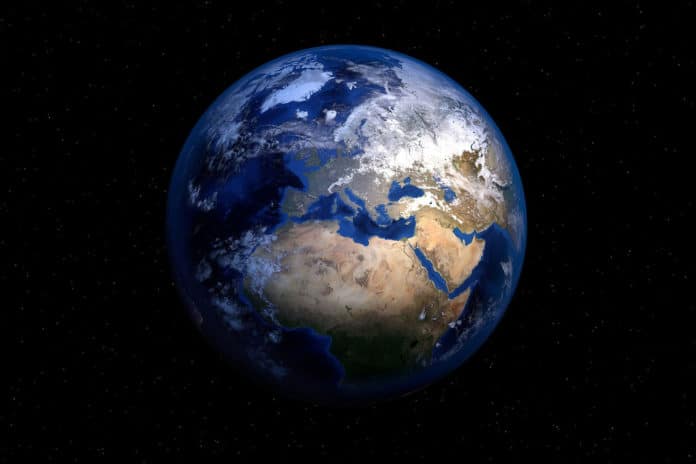Ozone (O3), making up a tiny proportion of Earth’s atmosphere by weight, is one of Earth’s most essential molecules for life. Without a substantial stratospheric O3 layer, the surface would receive higher amounts of harmful ultraviolet (UV) radiation. However, this modern-day O3 layer would not exist without abundant molecular oxygen (O2), and the Earth’s atmosphere has not always been O2-rich.
Atmospheres in the solar system continuously change, and Earth’s atmosphere is no exception. Earth’s atmospheric oxygenation has varied through time from anoxic origins, with O2 now the second most abundant constituent of the atmosphere. The last 2.4 billion years represent an essential chapter in developing the biosphere. Oxygen levels rose from almost zero to significant amounts in the atmosphere, with concentrations fluctuating but eventually reaching modern-day concentrations approximately 400 million years ago.
More complex multicellular organisms and animals began to colonize land during this time.
Gregory Cooke, a Ph.D. researcher in the School of Physics and Astronomy at the University of Leeds, led the study. He said the findings raise new questions about the evolutionary impact of UV radiation, as many forms of life are known to be negatively affected by intense doses of UV radiation.
He said: “We know that UV radiation can have disastrous effects if life is exposed to too much. For example, it can cause skin cancer in humans. Some organisms have effective defence mechanisms, and many can repair some of the damage UV radiation causes.”
“Whilst elevated amounts of UV radiation would not prevent life’s emergence or evolution, it could have acted as a selection pressure, with organisms better able to cope with greater amounts of UV radiation receiving an advantage.”
The research – A revised lower estimate of ozone columns during Earth’s oxygenated history – has been published in the scientific journal Royal Society Open Science.
The amount of UV radiation reaching the Earth is limited by the ozone in the atmosphere, described by the researchers as “one of the most important molecules for life” because of its role in absorbing UV radiation as it passes into the Earth’s atmosphere.
Ozone forms as a result of sunlight and chemical reactions – and its concentration is dependent on the level of oxygen in the atmosphere.
For the last 40 years, scientists had believed that the ozone layer could shield life from harmful UV radiation when the oxygen level in the atmosphere reached about 1% relative to the present atmospheric level.
The new modelling challenges that assumption. It suggests the level of oxygen needed may have been much higher, perhaps 5% to 10% of present atmospheric levels.
As a result, there were periods when UV radiation levels at the Earth’s surface were much more significant, which could have been the case for most of the Earth’s history.
Mr. Cooke said: “If our modelling is indicative of atmospheric scenarios during Earth’s oxygenated history, then for over a billion years the Earth could have been bathed in UV radiation that was much more intense than previously believed.”
“This may have had fascinating consequences for life’s evolution. It is not precisely known when animals emerged, or what conditions they encountered in the oceans or on land. However, depending on oxygen concentrations, animals and plants could have faced much harsher conditions than today’s world. We hope that the full evolutionary impact of our results can be explored in the future.”
The results will also lead to new predictions for exoplanet atmospheres. Exoplanets are planets that orbit other stars. The presence of certain gases, including oxygen and ozone, may indicate the possibility of extra-terrestrial life. The results of this study will aid in the scientific understanding of surface conditions in other worlds.
Journal Reference
- G. J. Cooke, D. R. Marsh, C. Walsh, B. Black and J.-F. Lamarque. A revised lower estimate of ozone columns during Earth’s oxygenated history. Royal Society Open Science 2022 DOI: 10.1098/rsos.211165
